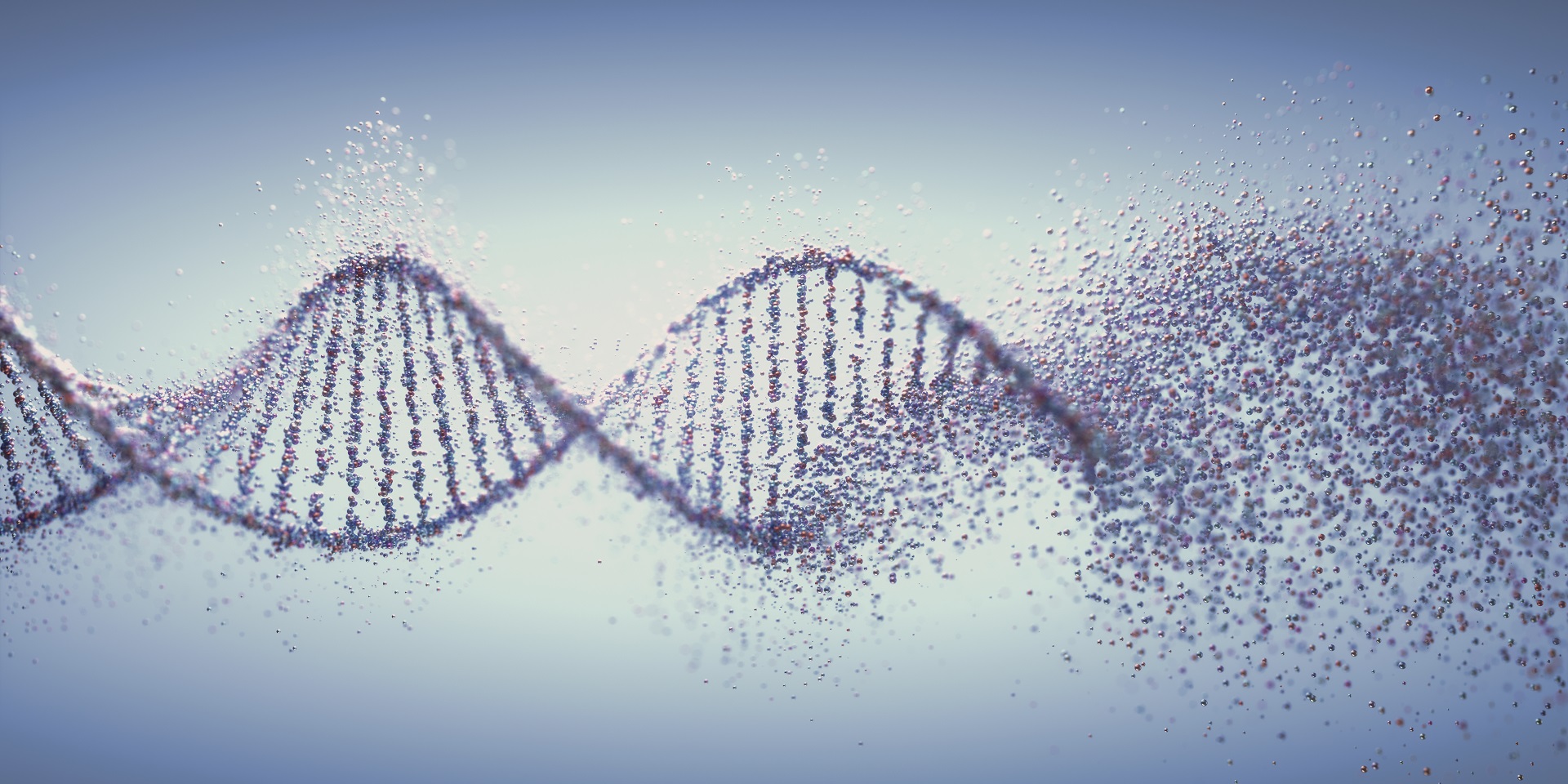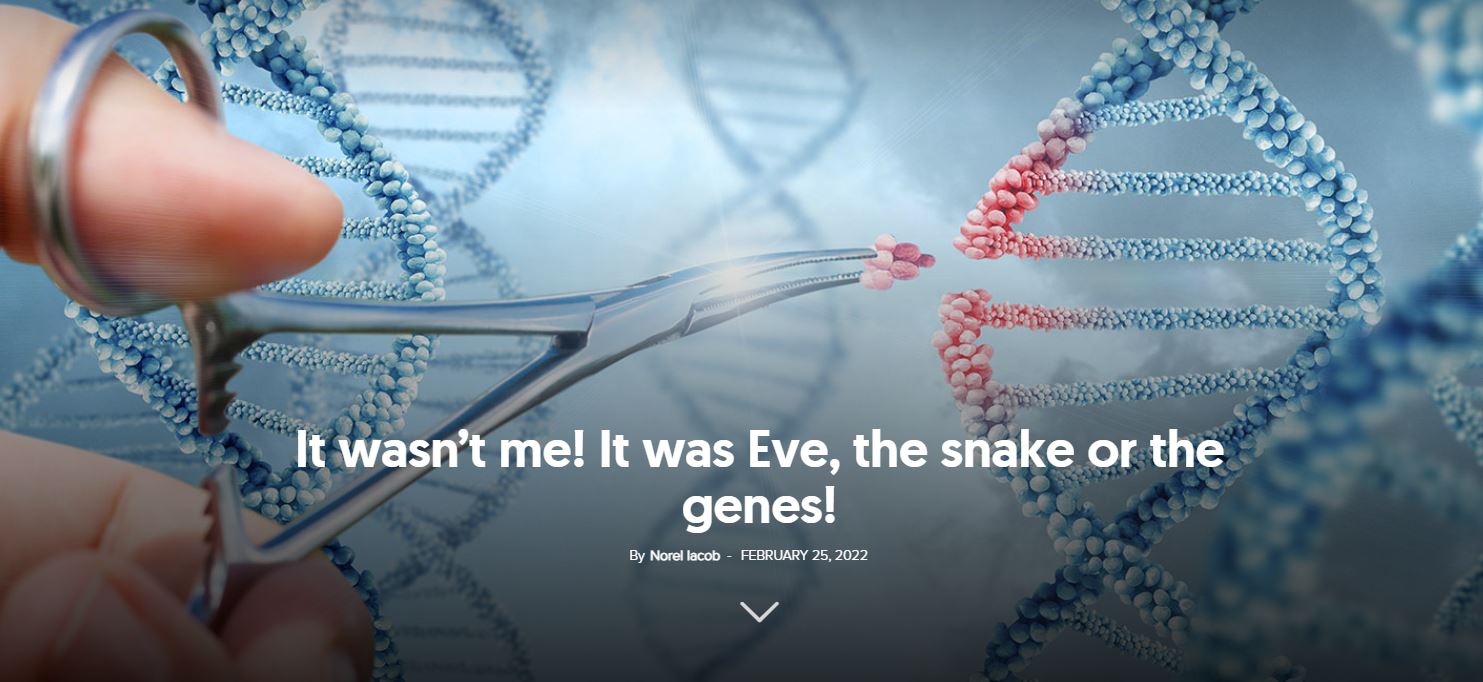Grandpa’s eyes, mother’s wide hips, aunt’s serene gaze, father’s ambition, great-grandmother’s rheumatism—all the little traits that define us seem to come from ancestral parents who, together, should have all the genes that anyone can have today, all the possible ingredients for the recipe from which we were made.
Picture a huge hall, full of toy train cars. Each one of us receives a few of them and then goes through life with our own train set, on preset rails—the only ones that fit. From the point of view of the train cars, things are not much different, but the rails could prove to be a real highway with countless lanes in each direction.
The recipe book of the human body is the genetic code, and the variation of recipes is what ensures our uniqueness. Most gene variations are harmless (for example, variations in the genes responsible for eye or hair colour). However, wrong variations also exist; they are called genetic mutations.
The genetic dowry, the unique baggage with which we are catapulted into life, can be changed through complex manoeuvres, due to current technology and science, performed in three ways: (1) either at the level of cells of already formed organisms (somatic cells)—effective only for the individual on whom they are performed, (2) at the level of the cells from which a new form of life will emerge (germ cells)—transmissible to subsequent generations, or (3) through spontaneous changes that occur under the influence of biological and physical factors.
Bubble boy and gene therapy
David Vetter was born in 1971 with a complex genetic defect due to which his immune system was virtually non-functional. In severe combined immunodeficiency—the genetic disease that David suffered from—the cells responsible for defending against infections do not form. Thus, any contact with an infectious agent triggers severe, lethal infections, sooner or later.
Already having lost a child to the same disease, David’s parents prepared conscientiously, designing an entire system that would provide the baby with a sterile environment designed to protect him from infections. This is how David famously became known as “bubble boy”, given that in the twelve years of his life he lived permanently in completely isolated spaces. Criticised for choosing to conceive a child at risk of living a lonely life in a plastic bubble, David’s parents and the doctors who cared for him created the context for the introduction of gene therapy into medical use.
Gene therapy refers to the correction of gene functions either by introducing a fragment of DNA that replaces the mutant gene, or by repairing the actual defect in the gene.
In 1990, a girl with the same disease as David Vetter was the first patient to receive gene therapy. The intervention on genetic material is a source of enthusiasm for the treatment of diseases with a genetic component, such as thalassemia, cystic fibrosis, Parkinson’s disease, certain cancers or HIV infection, and efforts in this regard have increased in the last two decades.
The shifting sands of gene therapy
The second way in which genetic dowry can be changed is the intervention on germ cells themselves, from which a new organism is formed.
Current technology can be used in the field of stem cells and genetic modifications of human beings, but also in the development of artificial organisms. Science can now alter life forms at the most basic genetic level, creating new life forms and leading researchers onto the shifting sands of moral implications. Research in the field of human design does not find its place in the ethical context of the moment.[1] However, the potential for playing God remains attractive to some.
In 1932, Aldous Huxley published Brave New World, in which he imagined a social and moral structure resulting precisely from the rigorous control of genetic inheritance. In this new world, morality would change radically, the author suggested, due to the fact that people would perceive God differently: “Well, he manifests himself as an absence; as though he weren’t there at all. […] God isn’t compatible with machinery and scientific medicine and universal happiness. You must make your choice. Our civilization has chosen machinery and medicine and happiness.”
Basic genetics concepts
The cells of the human body contain 46 chromosomes in their nucleus, grouped in 23 pairs. The first 22 pairs are called autosomal chromosomes, which are joined by the sex chromosomes, X and Y. A mother transmits to her child 23 chromosomes through the egg, while the father transmits an equal number of chromosomes through sperm. Two very long, thin strands of DNA, wrapped together, form a chromosome.
From these chains, certain sequences represent genes. Genetic material that constitutes genes also exists in the mitochondria, i.e. outside the nucleus. All the DNA in a cell (nuclear and mitochondrial) forms the genome. Genes represent about 1% of the genome. Each of the approximately 20,000 genes contain information that guides our growth, development, and health, in the form of a chemical code (amino acids in DNA) called a genetic code.
But who am I?
In addition to the medical and moral implications of gene interventions, the psychological aspect remains important: invoking genetic inheritance is a common excuse for personal failures or the success of others. It is true that we are born with the baggage of genetically predefined traits, but to what extent can these be considered the explanation for what we do in life?
A person’s perception of themselves changes according to their perception of their genetic baggage. The availability and accuracy of genetic testing encourages a deterministic approach to life, diminishing our mental and physical ability to improve or exceed our limits.
In his book Surviving the Extremes, Dr. Kenneth Kamler examines the way in which the human body manages to survive in conditions considered life-threatening: on Everest, without oxygen, or in the depths of the ocean. “It’s hard to explain how they can do that because if you take the numbers that we know from medical school, it just shouldn’t happen. But it does happen. It happens in every kind of human activity. People exceed what you would calculate as their limits”.[2] This does not happen because doctors misunderstand human capabilities, but because most people actually give in to these difficult situations.
Tanya Streeter is a sportswoman who, in the 2000s, broke record after record in deep diving, managing to regularly reach blood oxygen saturations below 50%, whereas, in a hospital, a saturation lower than 70% is considered very dangerous for the brain and heart. “To redefine your limits is to first accept that there are limits. They are just not where you think they are,” says the owner of these exceptional lungs. Tanya started diving when she was 25 years old. Who would have known that human lungs could achieve such performance if she had preferred to bury herself in an office and swim only five days a year on her holidays at the seaside?
Genes can be modified. The traits that these genes determine can, implicitly, be changed. Nevertheless, our identity is not determined by the genes we do or don’t have, but by the abilities we can refine, the new limits we can overcome, and the sensational abilities we can acquire through constant training and education.
Clarisa Bîrlog is a surgeon.



















